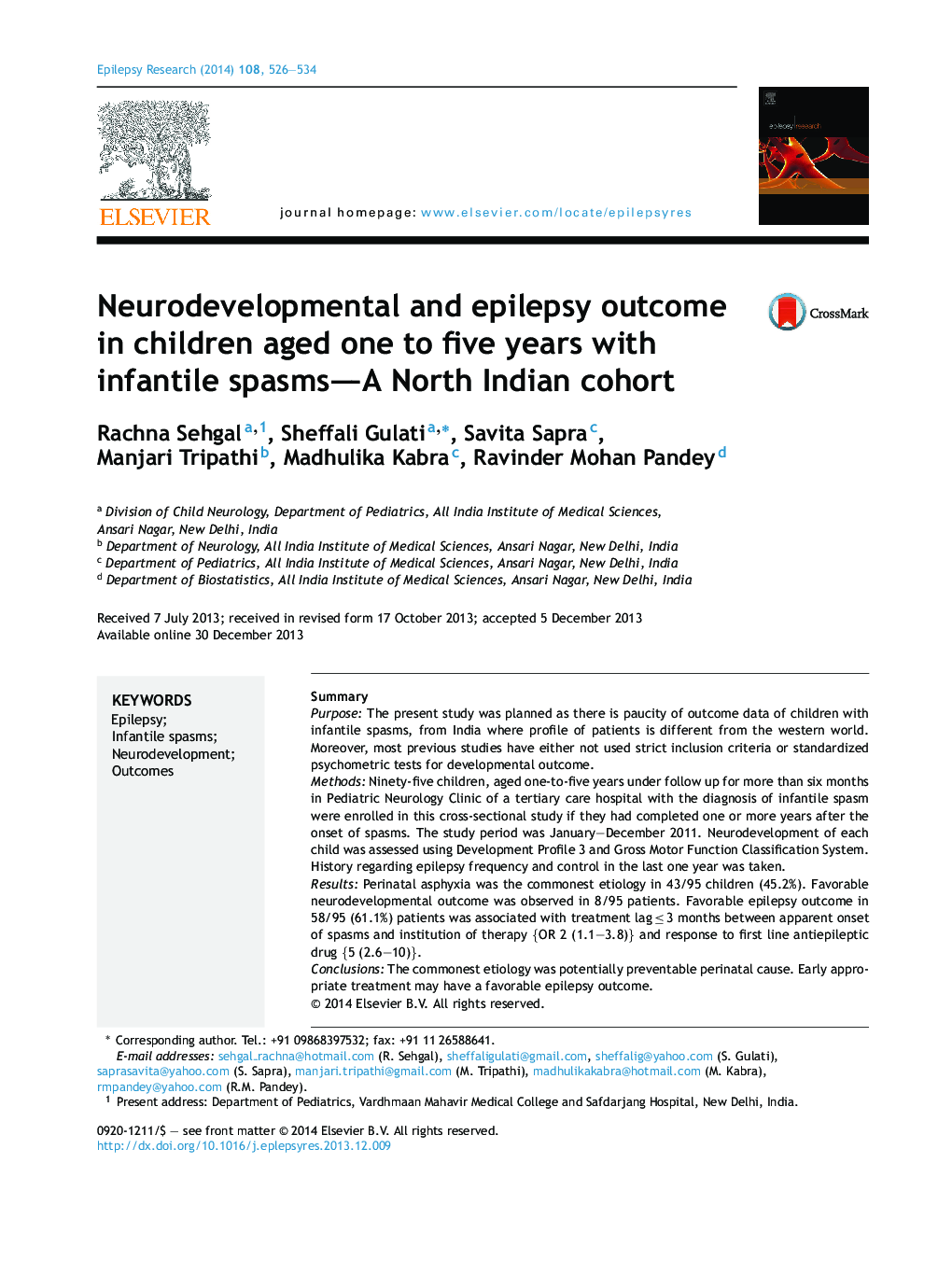| کد مقاله | کد نشریه | سال انتشار | مقاله انگلیسی | نسخه تمام متن |
|---|---|---|---|---|
| 3052115 | 1186080 | 2014 | 9 صفحه PDF | دانلود رایگان |
• Preventable perinatal asphyxia was the commonest etiology of infantile spasms (45.2%).
• DP 3 and GMFCS were used for developmental assessment.
• Favorable neurodevelopmental outcome seen in 8.4%; not associated with any predictors.
• Favorable epilepsy outcome in 61.1% was associated with treatment lag and response to first line drugs.
• Favorable motor outcome in 43.2% was associated with absence of spasticity.
SummaryPurposeThe present study was planned as there is paucity of outcome data of children with infantile spasms, from India where profile of patients is different from the western world. Moreover, most previous studies have either not used strict inclusion criteria or standardized psychometric tests for developmental outcome.MethodsNinety-five children, aged one-to-five years under follow up for more than six months in Pediatric Neurology Clinic of a tertiary care hospital with the diagnosis of infantile spasm were enrolled in this cross-sectional study if they had completed one or more years after the onset of spasms. The study period was January–December 2011. Neurodevelopment of each child was assessed using Development Profile 3 and Gross Motor Function Classification System. History regarding epilepsy frequency and control in the last one year was taken.ResultsPerinatal asphyxia was the commonest etiology in 43/95 children (45.2%). Favorable neurodevelopmental outcome was observed in 8/95 patients. Favorable epilepsy outcome in 58/95 (61.1%) patients was associated with treatment lag ≤ 3 months between apparent onset of spasms and institution of therapy {OR 2 (1.1–3.8)} and response to first line antiepileptic drug {5 (2.6–10)}.ConclusionsThe commonest etiology was potentially preventable perinatal cause. Early appropriate treatment may have a favorable epilepsy outcome.
Journal: Epilepsy Research - Volume 108, Issue 3, March 2014, Pages 526–534
